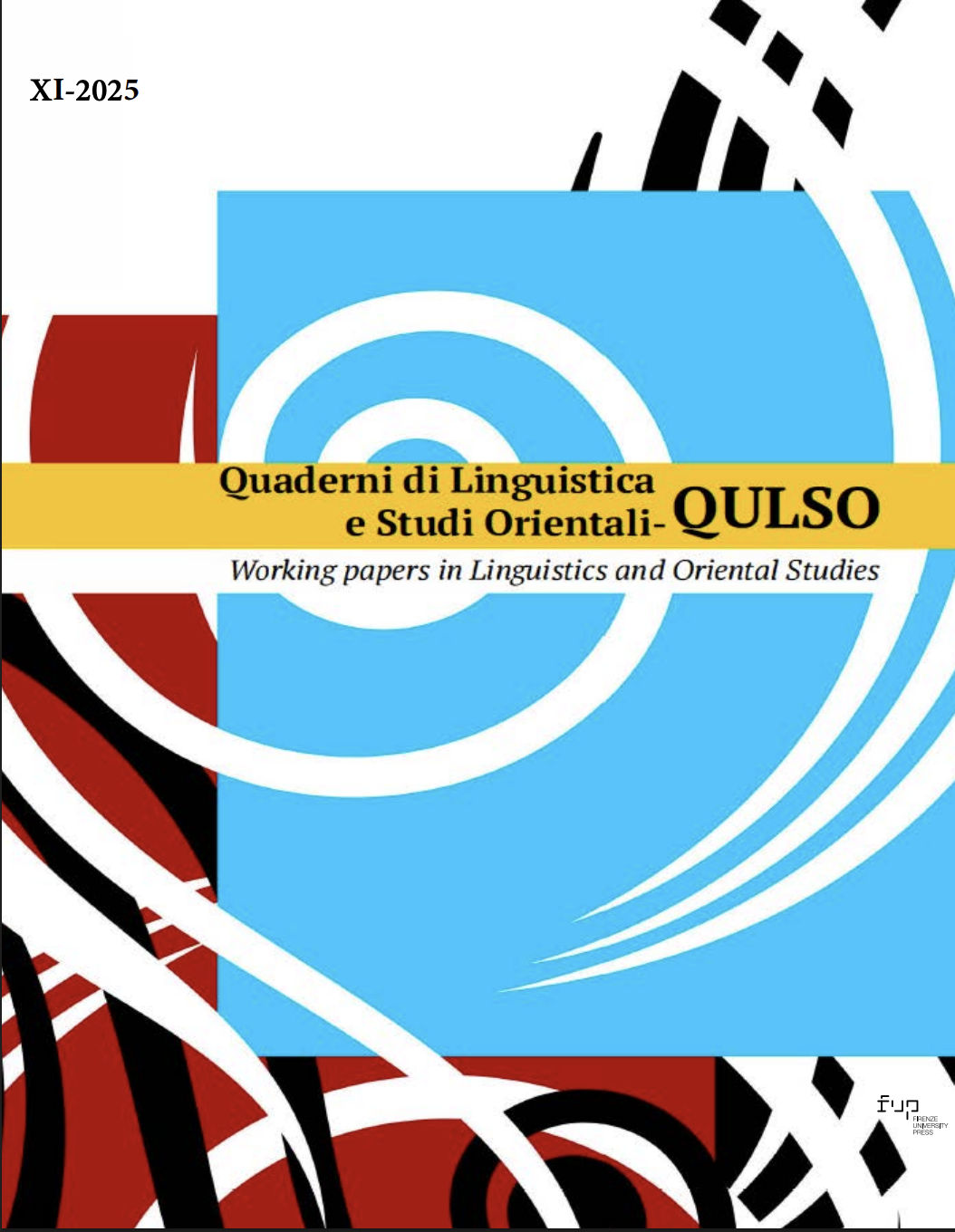Between “Qui” and “Qua” and “Lì” and “Là”: Some Observations on Locative Adverbs and Linguistic Space in Italian
Published 2025-09-30
Keywords
- Deixis,
- Demonstratives,
- Locative Adverbs,
- Metaphors,
- Spatial Conceptualisation
How to Cite
Copyright (c) 2025 Alice Giovanelli

This work is licensed under a Creative Commons Attribution 4.0 International License.
Abstract
This article discusses some aspects of spatial conceptualisation in Italian, focusing on deixis and the Italian locative adverbs: the proximal qui and qua (‘here’), and the distal lì and là (‘there’). It examines how deixis is realised through demonstrative adjectives or pronouns and through locative adverbs, highlighting and debating some shared properties and features. It is argued that Italian speakers think of space through two metaphors, which can be defined generally as SPACE IS A POINT and SPACE IS WIDTH. This hypothesis is supported by a set of examples, including a comparison with another Romance language (Spanish) based on data from Fleming and Lloy (2023), that illustrate the variable cognitive understanding of space associated with different adverbs. In conclusion, this work suggests that there is a tendency among Italian speakers to favour the deictic pair in -i to indicate a specific, punctual space, and the deictic pair in -a for a broad, unlimited environment, in line with the two proposed spatial metaphors.

